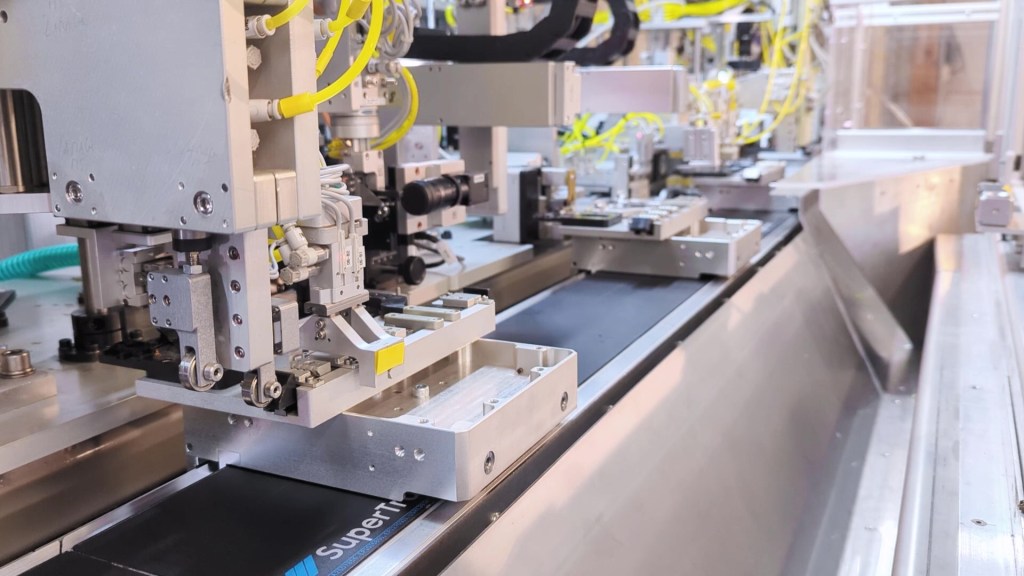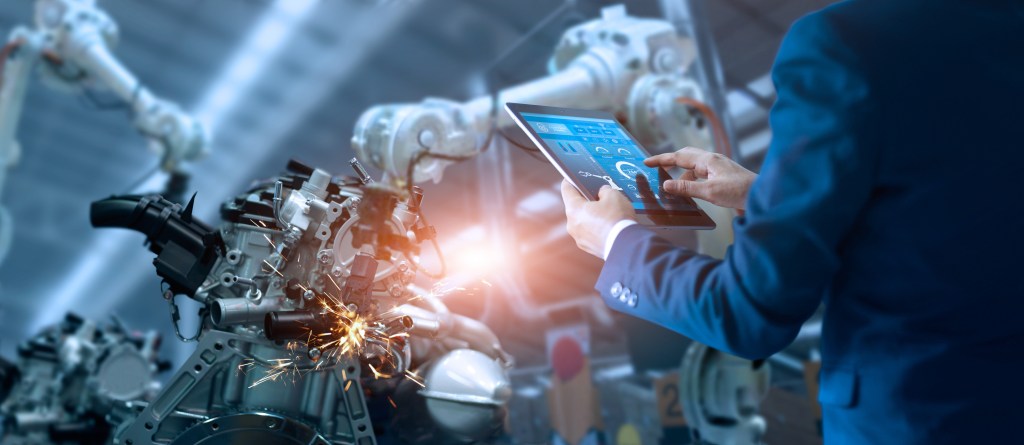Case Study: Reducing Factory Footprint by 44%
How one manufacturing company gained back floor space and increased throughput
Executive Summary
A leading medical device manufacturer located in North America needed to increase production to keep up with market demands. After evaluating existing production processes, the decision was made to switch from traditional to smart conveyance. By utilizing SuperTrak CONVEYANCE™ during implementation, the overall system cost was reduced, and they also successfully reduced their factory footprint and increased productivity.

About the client
A leading medical device manufacturer in North America. Their original process consisted of two linked processing cells, utilizing traditional conveyance methodology. Nested fixtures interacted with robots to load and unload a part nest to processing stations throughout the system. The two cells were linked with a buffer conveyor between them resulting in a limited amount of decoupling of the two automated processes. Their goal was to add an additional line without increasing their factory footprint.
The challenges
As product demand continued to increase, the customer sought to quickly ramp up production but didn’t have additional space on the manufacturing floor to add additional machinery in the incumbent design. While willing to invest in automation, the technology had to be flexible enough to adapt to their business needs and show a greater ROI than the initial process.
The solution
By combining two critical processes and maintaining a line rate of 60 PPM, the customer could reduce their factory footprint and make room for additional lines, thus increasing output. As they continued to develop their processes and production rates stabilized, they realized the need for higher speed operations and ultimately invested in SuperTrak GEN3™ as the primary foundation for their automation. The flexibility of the SuperTrak CONVEYANCE™ platform allowed the customer to ramp up production as needed and control their capital expenditures.
Results
After final implementation the customer saw a 44% reduction in factory footprint with the new cell when compared to the existing equipment. The initial integration phase, using the SuperTrak CONVEYANCE™ platform, allowed the manufacturer to decouple two cells. In doing so they were able to accomplish two main things. First, the asynchronous capabilities of the platform allowed for greater time in process equaling more throughput and resulting in increased overall equipment effectiveness (OEE) of the system by 5%.
Second, it allowed the customer to eliminate the need for redundant stations and realize a 30% reduction in floor space. Individually controlled shuttles allowed for varied part spacing throughout the line which ultimately increased the productive time of each station. Utilizing SuperTrak GEN3™ as the sole foundation for their processes resulted in a further 14% reduction in system size. The reduction was achieved by further eliminating additional redundant equipment and achieved the primary goal of increasing throughput and reducing the overall system cost.

As the operations of the customer continue to grow they have since implemented more automation cells utilizing SuperTrak CONVEYANCE™ platforms.
Factory footprint reduction was the primary target of this implementation, however, the SuperTrak CONVEYANCE™ platform yielded better performance in the following areas as well:
1. Transport Precision
The original system had to be mechanically docked at working stations for location. Over time, these locating features began to wear resulting in the loss of location accuracy. The SuperTrak CONVEYANCE™ implementation allowed for precise repeatability of stop locations for the shuttles and eliminated the need for the mechanical stops at processing. With no mechanical mechanism for stopping, the impact of mechanical wear on accuracy is now nonexistent.
2. Process Speed
High acceleration, low settling time, and individual shuttle control means that processing stations were now able to be located closer together on the SuperTrak CONVEYANCE™ platform.
3. Cleanliness
The cleanliness of the new system eliminated the shrouding that was required for the traditional conveyance system. The lack of debris created by the SuperTrak GEN3™ platform minimized maintenance associated with cleaning.
4. Future Flexibility
Due to the high level of control on shuttle motion and modularity of the SuperTrak CONVEYANCE™ platform, the customer felt confident in their investment knowing that the system could easily adapt to part, process, and component changes over time.
5. System Value
The customer quickly realized the ROI in their new system with a 5% OEE increase. Producing higher throughput with a minimal factory footprint, the SuperTrak CONVEYANCE™ platform offered the highest value but lowest total cost system.
Related Case Studies
Case Study
The Larisys Group – Case Study By watching this video, you will better understand the SuperTrak CONVEYANCE™ system, its capabilities, and how collaboration can lead to innovative solutions that can benefit the industry. Thank you for watching. The Solution The Results Related Case Studies
Case Study
Automated Assembly Experience The Results Related Case Studies
Case Study
Key Takeaways – The gradual deployment of their Smart Conveyance system – How their process improved at each stage of implementation – The results they achieved The Process Related Case Studies
Contact us
Need to reduce your factory footprint? Complete the quick form and discover how SuperTrak CONVEYANCE™ can be used in your applications.



